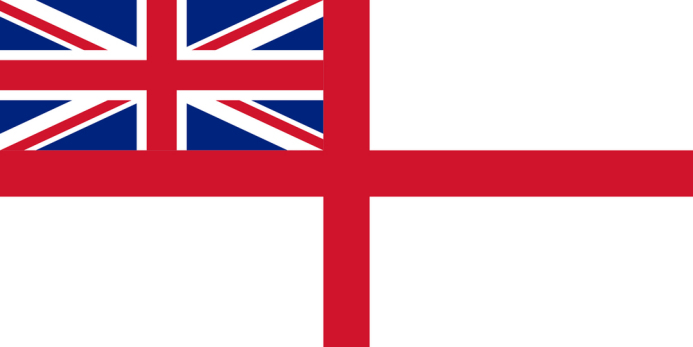
Few maritime forces have had such a storied legacy as the Royal British Navy. Although previous maritime formations had existed and operated around the British Isles for centuries, the modern Royal Navy can trace its formal origins to 1546. Henry VIII established the Royal Navy in order to keep up with rival countries and powers in the region. This growing naval fleet would eventually require an administrative “Navy Board,” to be established to oversee such an expansive and important asset of the state. This strengthened force could not have come sooner, as in the summer of 1588 the Spanish Armada had set sail for an attack and invasion of Britain. The Royal Navy would skirmish and battle the Spanish Fleet, until it was defeated. This conflict proved to be a major turning point for naval warfare, as tactics shifted from a focus on ship-boarding to the use of cannons and more refined naval gunnery.
During the 16th and 17th centuries, many battles and developments would occur, most notably with Sir Francis Drake circumnavigating the globe between 1577-1580 and successfully returning to England; he would be knighted for this achievement. Then, between the English Civil War and the Restoration of the monarchy in the mid 1600s, the Royal Navy would go through more changes and growth. The use of “HMS” for His or Her Majesty’s Ship was also established during this period. This is a tradition still utilized by the Royal Navy to the present day.
Throughout the 18th and 19th centuries the British Navy would continue to fight with other European powers for supremacy of not only European waters, but for supremacy of all the sea. In 1798 the British won a decisive victory in the Battle for the Nile, giving them control of the Mediterranean Sea. Major naval battles with the French would take place each century, until the British finally achieved full supremacy over them with their victory at the Battle of Trafalgar, in October of 1805. The Royal Navy would go on to fight other regional skirmishes and battles, recording far more victories than defeats over this period, further solidifying their mastery of the seas.
By the beginning of the 20th century, the Royal Navy had played a major role in establishing the British Empire as the largest and the most dominant in history. However, this prosperity and success would be challenged with the degradation of the status quo on mainland Europe, with the outbreak of WWI. Leading up to and through the war, the Royal Navy would grow to a size never before achieved, at its height having well over 700 major vessels at its disposal (not accounting for auxiliary ships like minesweepers, etc.). Due to both tactical and technological advancements during the early 20th century, the Royal Navy would see multiple iterations of building programs to try and keep up with the threats posed to its interests by both friendly and enemy nations. Again, the Royal Navy would see a massive increase in ships during WWII, ballooning to well over 2,200 vessels (again, excluding auxiliary ships).
After WWII ended, the British Empire and the Royal Navy could no longer sustain its expansive empire, and would see its capabilities atrophy and shrink considerably. The Royal Navy still needed to maintain a level of readiness to protect global interests and stand ready to fight the Soviet Union during the Cold War. Most notably during this period, the Royal Navy was able to conduct the long range and challenging mission of recapturing the Falkland Islands from Argentina. Though far from home with a strained supply chain and limited capabilities, the Royal Navy was able to support air, sea, and land operations to bring a swift victory to the conflict. However, with the fall of the Berlin Wall in 1989, the Royal Navy continued to reduce in size and capability.
Although recent events and gradual shifts in policy have tried to stem the degrading capabilities of the Royal Navy, the force is a shadow of its former self. No longer does Britannia rule the waves, instead having to rely on allied nations, long range munitions, or other proactive deterrents. There are talks of enhancing and expanding current capabilities, but with the very dynamic and challenging situations in the near future, the Royal Navy will have to call on its storied past to help guide it through modern conflict.
